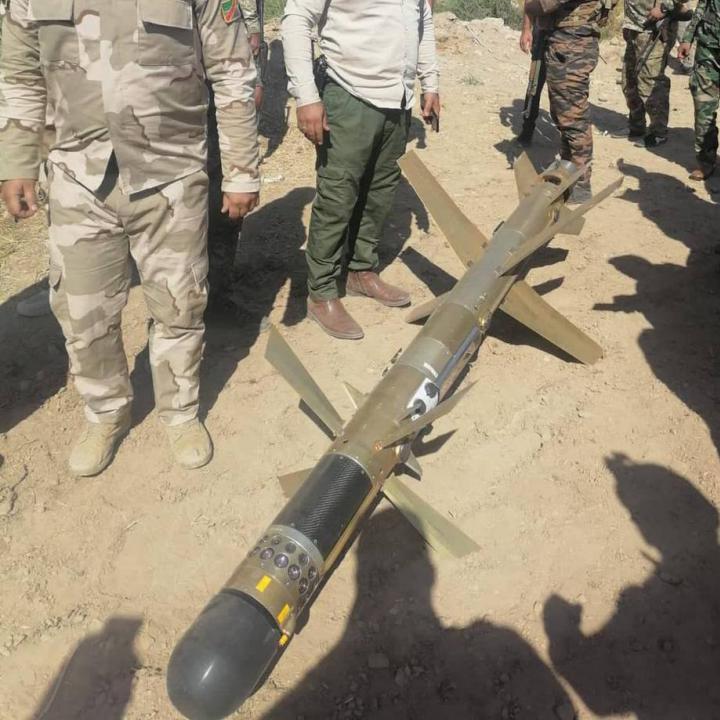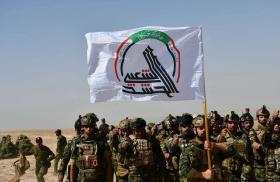
Iraqi Militias Show Off Iranian Anti-Air Missile

Iran-backed resistance groups are seemingly staging missile "discoveries" as a way of warning off coalition air forces.
On October 21, Shafaq News (a Kurdish-backed mainstream outlet) announced that a missile had been found by the 52nd Brigade of Iraq's Popular Mobilization Forces (PMF) in the vicinity of the Tuz Khormatu military airfield, in a hamlet called Albu Sabah. For context, the 52nd Brigade is a Shia Turkmen group that goes by the name “Fawj Amerli” and is close to the major Iran-backed militia Kataib Hezbollah. The brigade controls the so-called “Martyr’s Camp” ten miles from where the missile was found. This camp is a key link in the system used by Iran's Islamic Revolutionary Guard Corps-Qods Force to supply Iraqi militias with drones and rockets.
The missile in question was an Iranian-made “358” surface-to-air system (Figure 3), a type that has previously been captured in Iranian arms shipments bound for Yemen (e.g., on November 25, 2019, and February 9, 2020), and thereafter publicly displayed and assessed to be of Iranian origin by the UN Panel of Experts on Yemen. A similar ground-attack version of the 358 was used by Iran-backed militias in Idlib, Syria, on September 23, 2021.
Interestingly, Shafaq News reported that the 52nd Brigade claimed the missile was “directed at” the airfield. This could be a laughably clumsy attempt at disinformation: consider, one of the PMF units closest to Iran's Qods Force announces that it found an Iranian-made missile pointing at an Iraqi army and PMF camp. Alternately, the muqawama (resistance) may be trying to lay the groundwork for denying that they are responsible for any future uses of 358 missiles, since a 358 was allegedly “directed at” them from Albu Sabah.
In Militia Spotlight's view, the “outing” of the 358 in Tuz Khormatu is probably a coded communication of anti-air threats in the close vicinity of coalition aircraft. Open-source transponder tracking services (Figure 4) show that Tuz is a waypoint on the routing of most coalition intelligence, surveillance, and reconnaissance (ISR) aircraft and drones as they circuit through northern Iraq, presumably due to the presence of Islamic State hotspots in the area. The 358 is designed specifically to attack such low-flying surveillance platforms and has been used in Yemen to target U.S. and Saudi drones.
Currently, Militia Spotlight believes that the muqawama are more likely to threaten anti-air attacks than undertake them, with the aim of deterring or complicating coalition assistance to Iraq. This was our assessment in July, when previous anti-air threats were aired by the facade group Saraya Awliya al-Dam. The muqawama still seem hesitant to maximize the lethality of their attacks, and striking a manned platform would be exceedingly provocative. Yet attacks on unmanned U.S. drone systems could be attempted. Whatever the case, the muqawama will no doubt continue to deploy threats in a manner intended to reduce freedom of movement for coalition personnel and international organizations, including claimed or actual attacks against ISR aircraft hangars and airborne assets or threats against election observers and diplomats.







